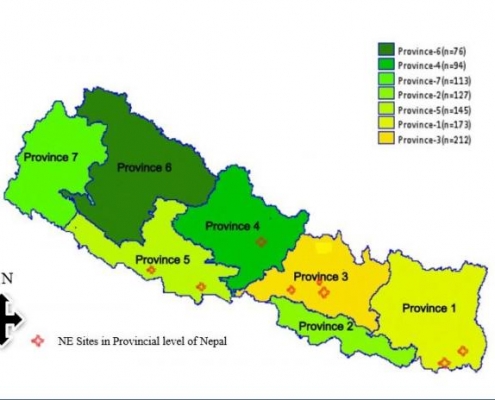Digital precision agriculture tool helps Nepalese rice farmers breakthrough yield barriers
AFRICAN PLANT NUTRITION INSTITUTE
Rice farmers in Nepal are chronically falling short of their potential productivity. Poor rice yields are persistent across the Terai–a lowland region lying south of the outer foothills of the Himalayas that extends through southern Nepal into northern India–and existing decision support systems are failing to provide the precision required.
To date, farmers in the area have lacked the knowledge and support they need to properly plan nutrient applications for their crops. Current nutrient recommendation systems only provide “blanket” prescriptions that fail to consider the large variability that occurs across their rice-growing landscapes. Nepal’s rice yield gaps–the difference between actual and attainable yields–are widening as soil fertility declines, which represents a major threat to the sustainability of these smallholder farms.
A team of researchers, headed by Dr. Lal Prasad Amgain, Far Western University, Nepal, along with Dr. Jagdish Timsina, Global Evergreening Alliance, Melbourne, Australia, looked at reversing this trend through the implementation of a flexible nutrient recommendation system that can adapt to the unique conditions faced by individual smallholder farmers.
Published in the Journal of Plant Nutrition, the article describes the impact of a 4-year study conducted across the Terai and the central mid-hill regions of Nepal. The basis for study is a broadly field-tested digital tool called Nutrient Expert® (NE).
This software-based system leads individual farmers, or farm advisors, through a step-by-step decision-making process that describes how best to apply nutrients to their rice fields. Prior to its introduction into Nepal, NE Rice has been successfully implemented in India, Bangladesh, Sri Lanka, as well as in China. The tool has been proven effective in a variety of smallholder cropping systems.
> Source: EurekAlert!



 Credit: unsplash @danicalifornia/CC0 Public Domain
Credit: unsplash @danicalifornia/CC0 Public Domain Credit: Pexels @Henri Guérin/CC0 Public Domain
Credit: Pexels @Henri Guérin/CC0 Public Domain